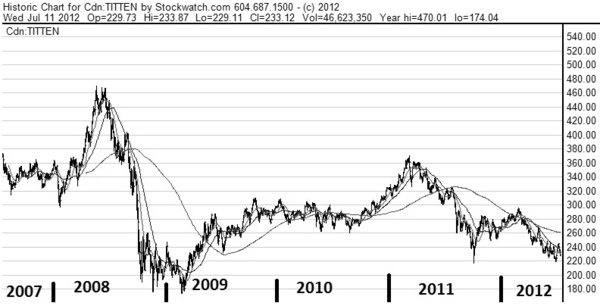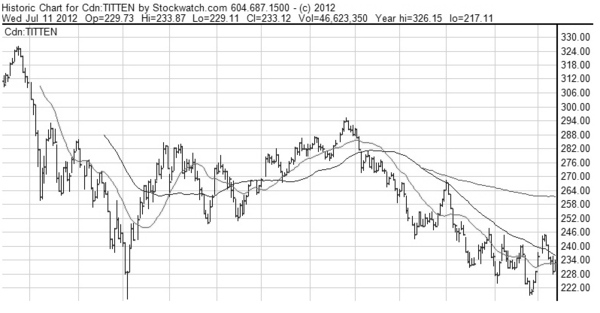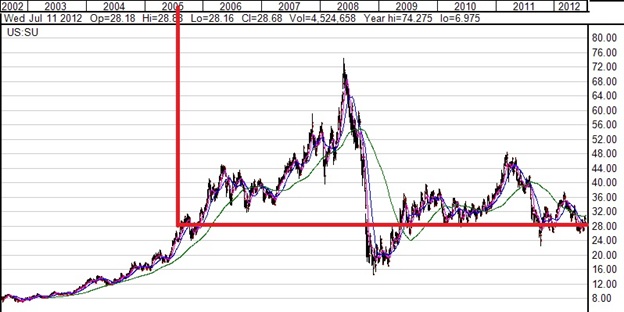Two years ago Colombia was the hottest international oil play in the world (for Canadian investors), with big wells creating big valuations and stock runs that left investors hungry for more.
Now, these stocks have not only fallen to earth, they’ve crashed through the floor into the basement—despite good oil prices.
What happened? And more importantly, is this an opportunity for investors?
The opportunity answer is… almost, says Fred Kozak, former oil and gas analyst at Canadian brokerage firm Canaccord Genuity, and now an independent.
“Colombia still has FARC issues, environmental permitting is still a big problem and pipeline constraints are all impacting the investment climate,” he said in an interview.
FARC is the Spanish acronym for the left wing guerrilla movement in Colombia. Former President Alvaro Uribe was able to secure billions of dollars in US aid in the last decade, which was used for the military and other means to reduce the FARC’s impact on the country.
With the FARC risk down a lot, foreign investors felt secure in investing billions of private capital into the country’s energy sector—especially the upstream oil and gas producers. The Canadians were VERY active, led by companies like Frank Giustra’s and Serafino Iacono’s Pacific Rubiales (PRE-TSX) and John Wright’s/Corey Ruttan’s Petrominerales (PMG-TSX).
Both companies were very successful developing assets in the Llanos Basin in the middle of the country, and both had GREAT stock runs—PRE went from $2-$34 in 2009-2010, and PMG went from $6-$40.
(Rubiales was the very first stock pick for paid-up OGIB subscribers in 2009 at $9/share, and I also rode PMG from $11-$33/share during that time).
There was a perfect storm of exploration success, a lower royalty rate, and the sense that this under-explored country could continue its string of high profile discoveries for years. Promoters created new junior exploration companies with bloated share counts—hundreds of millions of shares out—and investors still ate it up.
But now? In what I would call the senior Colombian stocks—Rubiales, Gran Tierra—they’re just above 50% of their highs, and the rest are anywhere from 20-50% of their highs. Those second round of bloated share count juniors quickly lost 80% of their value, and have only recently popped their head up.
Did anybody get the license plate on the truck that ran over these stocks?
It was actually several trucks, says Kozak. He says one of the big factors hitting these stocks was the Arab Spring of 2011—all international juniors the world over sold off after institutional and retail investors lost their appetite for foreign risk, as dictators got toppled one after the other starting in early 2011.
But sadly for everyone, FARC violence has increased this year. After several years of declining activity, brokerage firm Raymond James reports in an Aug 13 report that has been a “material” increase of security incidents reported since the beginning of the year. Pipeline attacks increased 3 fold year-over-year and 5 Ecopetrol contractors were killed in Putumayo this summer, near the Colombian/Ecuador/Peru border.
The FARC attacking pipelines doesn’t help an already difficult situation — increased oil production in Colombia has strained pipeline capacity.
“As much as 100,000 barrels a day of oil production (bopd) could be shut in, I’m not exactly sure, but it means that you have to truck oil,” says Kozak.
This means higher transportation costs, and companies can’t produce new discoveries at full throttle. In a negative market, this is deadly to a company’s share price.
Colombia’s daily oil production currently exceeds 900,000 bopd, having risen more than 60% since 2006, but pipeline constraints have not allowed it to crack the magic 1 million bopd mark.
Producers in Colombia are also experiencing long delays in permitting. Wells are not being drilled as fast as before as companies are left waiting for up to a year without knowing when they’d be able to drill.
This has hurt exploration activities, and several of the leading Colombian juniors are now spending a big chunk of their exploration in Brazil, Ecuador and Peru—and sometimes even farther afield.
—————————————————
This Stock Has DOUBLED for OGIB Subscribers…
And It Could Be the Next Big Junior Buy-Out Target
Exceptional drill results — one set after another — have validated my favorite junior oil company (to the tune of triple-digit gains, since January 2012).
But it’s not just the great success of its new core plays that has me so excited.
It’s the fact that they have only drilled a few wells in each one. There are still hundreds of wells left.
So, not only are there A LOT of gains still on the table, but it makes this junior my top takeover target for the rest of the year.
Plus, analysts just upped their price targets —so they almost match mine.
Click here to get my original research on this break-out trade, risk-free.
—————————————————
Another factor, Kozak adds, is that the new discoveries in Colombia just aren’t coming as quickly as they did a couple years ago.
“Colombia had great success at one point—but today look at Petrominerales PMG-TSX and GranTierra Energy GTE-TSX —PMG is now struggling while GTE is focused on developing discoveries. New discoveries are still limited.”
Colombia reported that 34% of all wells were successful in H1 2012 vs. 48% average from 2008-2010.
Canadians formed a big part of the foreigners that entered into the Colombian oil and gas sector in 2008-2009. I asked Kozak why that was, and he answered:
“We in Canada are entrepreneurs. We have so many teams chasing so many opportunities and recent success with our “resource plays” here has been technology related. Then guys say, hey, we can apply that somewhere else. We go apply our best practices and use our technology and turn things around.”
The Canadians focused on the Llanos basin which looks geologically a lot like Alberta’s foothills (light oil) and the Putamayo in the south which is similar to Alberta’s plains (heavy oil).
Colombia is one of a few countries in South America where you could go into the country and do business a lot like you would do in the west. The country is out of favor right now but Fred believes the question is when do you invest in the country, not if.
“With $100 Brent oil, you have $60-$70 netbacks—you can make phenomenal money in that country, but there are short term issues.” Kozak says these short term issues reflect growing pains as the oil and gas sector continues to mature.
“Success is responsible for the delays we’re seeing now—Colombia redefined its fiscal regime to attract new investment and kicked FARC out of most of country since President Uribe started his 2nd term in 2006.”
Recently, the army has increased its size and activity in the oil producing regions, improving security. This may lead to an improved perception regarding security in 3-6 months.
Permitting times have been slowly improving—the government is adding more people here as well. This should allow several companies to carry their plans of drilling high impact wells in the second half of 2012.
A new pipeline starting in Q1/13 is expected to carry more than 490,000 bopd. As that new capacity becomes imminent, it could be a huge catalyst for Colombian juniors.
An intriguing potential catalyst will happen sooner, however. The government has a new bid round in October for 115 blocks including 1/3rd for shale exploration in the Magdalena Basin.
Says Kozak: “There have been a number of wells drilled that have seen shale but nothing like western Canada. Remember that the drilling density in this part of Colombia is a fraction of what North America is used to. Both Exxon and Shell are scheduled to drill a well each on Canacol (CNE-TSX) farm-in lands, but depending on the bid round results in October, those results are not likely to be a 2012 catalyst.”
Kozak concludes that addressing the country-specific risks will help (FARC, permitting delays, pipeline constraints) but the tide that would lift all boats requires the risk on trade to come back. But he says investors should not sit on their hands waiting for the tide to come in:
“There’s going to be opportunity there especially through mergers & acquisition. These companies are very cheap. At these levels it’s almost cheaper to buy than to drill. The acquisition of PetroMagdalena (TSXC-PMD) by Pacific Rubiales (TSX-PRE) being an example.”
So how should investors approach investing in Colombian juniors? According to Fred the approach is not any different from domestic E&P juniors.
“Remember it’s always about the people. When looking at companies to invest in, who are the people involved—and projects—how quickly can they take it to production.”











